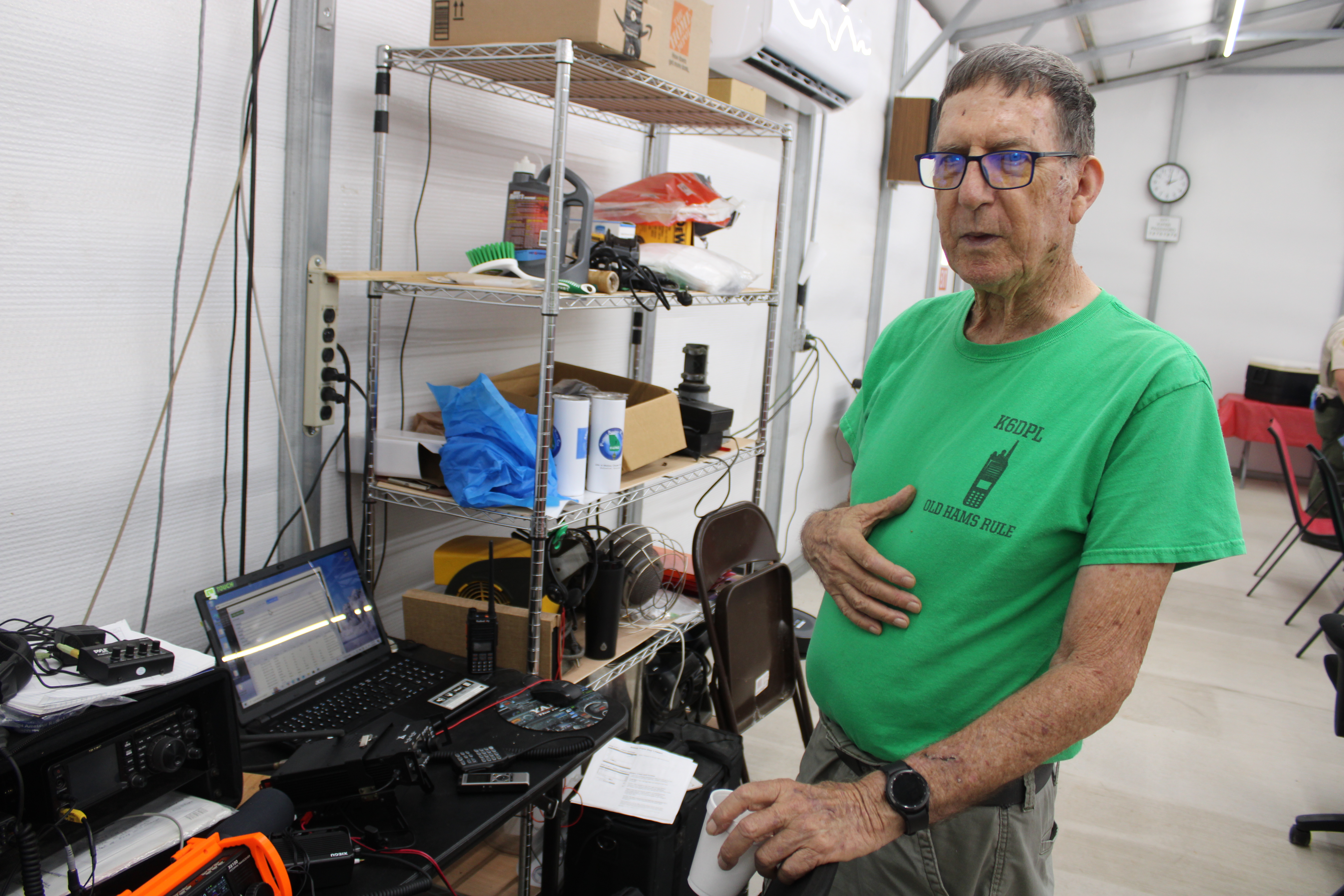OUR SPACE: How to make a satellite invisible
Published 2:46 pm Thursday, June 19, 2025

- All of the streaks in this photo were created by low-Earth orbit satellites reflecting sunlight, Most of the streaks were made by the developing Starlink constellation of communication satellites. In general, the streaks are indicative of an increasing number of satellites nearly continuously visible above the Earth after dusk and before dawn. (Amir H. Abolfath via NASA)
It’s so nice to have a reliable internet connection wherever you go via one of the new mega-constellations of communication satellites. In the deepest backwoods, out in the desert, in the middle of the ocean or at 30,000 feet in a commercial airliner – the internet is everywhere now. Subscriptions to the service are widely available, and now it’s an absolute necessity for search and rescue teams, first responders, scientists in the field or global shipping and transport. When there are no cell phone towers anywhere, you can get your internet from space.
It’s a mixed bag, however, and not everyone is thrilled about it.
Astronomers have sounded the alarm for many years now, and for professionals and amateurs alike it’s just about impossible these days to get good pictures of the night sky without accidentally capturing a bunch of bright satellites, since astronomers often use long exposure times, from several seconds to several hours. Satellites will appear like light scratches across the photos and ruin everything you were trying to observe.
Trending
It wasn’t that long ago when it was quite a thrill to catch a fast-moving satellite while stargazing. Nowadays you can just look up for a few minutes and you’re bound to see a few. Of course there is the International Space Station (ISS), whose flyovers are well-publicized and always exciting to see. But that’s one bright dot that is rarely visible for more than 5 minutes. A few months back I was out waiting for such a flyover and was stunned to see a trail of 22 small bright dots apparently following the ISS. I had accidentally witnessed a new batch of recently-launched Starlink satellites. Admittedly, it was an amazing sight, but it also drove home just how many stargazing experiences and astronomical observations were ruined by it.
What we see is of course the light of the sun reflected off the shiny exterior of a satellite, so the obvious solution to the problem is to paint new satellites black.
And this is where we run into a whole new set of problems. Black paint by itself will not fix the issue – if it’s just the least bit shiny it will reflect light just as well as unpainted metal. Besides, black surfaces absorb a lot of heat – never a good thing for delicate electronics (this is why your laptop has a fan inside). And the unforgiving environment of space does a number on painted surfaces, not to mention the weight a coat of paint adds to a spacecraft, which will raise the cost substantially.
The solution might lie in new paint or surface treatment technologies, such as Vantablack – the blackest black pigment ever produced. The original Vantablack was a layer of carbon nanotubes grown on shiny surfaces, rendering them just about invisible – it’s like you’re missing a piece in your field of vision. The “Vanta” in Vantablack is actually an acronym for Vertically Aligned Nano Tube Arrays, and its working principle is as simple as it is ingenious: imagine a surface covered in matte black drinking straws all standing straight up – any beam of light that hits it goes into a straw and bounces around in there, unable to bounce back out until its eventually absorbed in the form of heat. Ta-da – problem solved!
Or was it?
Sadly, carbon nanotubes are incredibly fragile – you touch them and they’re crushed. For a satellite, that’s just not practical. A new version was created where the nanotubes (our drinking straws-looking things) are not all standing up – more like when a fistful of straws falls on the floor. There is still plenty of light absorption happening but not quite as much. It’s still a lot blacker than most things you’ve ever seen. The good thing is, you can now mix those tubes into a paint medium and spray it onto your object!
Trending
But carbon nanotubes are not the only development out there. Carbon Black only reflects about 2% of all light – to the unaided eye that’s still pretty much invisible – and it’s a lot easier to produce and apply, and it can withstand the harsh environment of space quite well. Carbon black is almost completely pure elemental carbon that looks like soot. Engineers have high hopes that these coatings will improve the light pollution caused by satellites a great deal. Carbon Black will also not lead to an overheating situation as it was discovered in test runs. A new small satellite will demonstrate the paint’s effects on visibility next year.
Let’s hope that this new paint – Vantablack 310 – works as predicted, so that in the future new policies can be enacted to save the livelihoods of astronomers all over the world. Learn more about the issue and possible solutions at https://en.wikipedia.org/wiki/Vantablack .
Beate Czogalla is the Professor of Theater Design in the Department of Theatre and Dance at Georgia College & State University. She has had a lifelong interest in space exploration and has been a Solar System Ambassador for the Jet Propulsion Laboratory/ NASA for many years. She can be reached at our_space2@yahoo.com .





